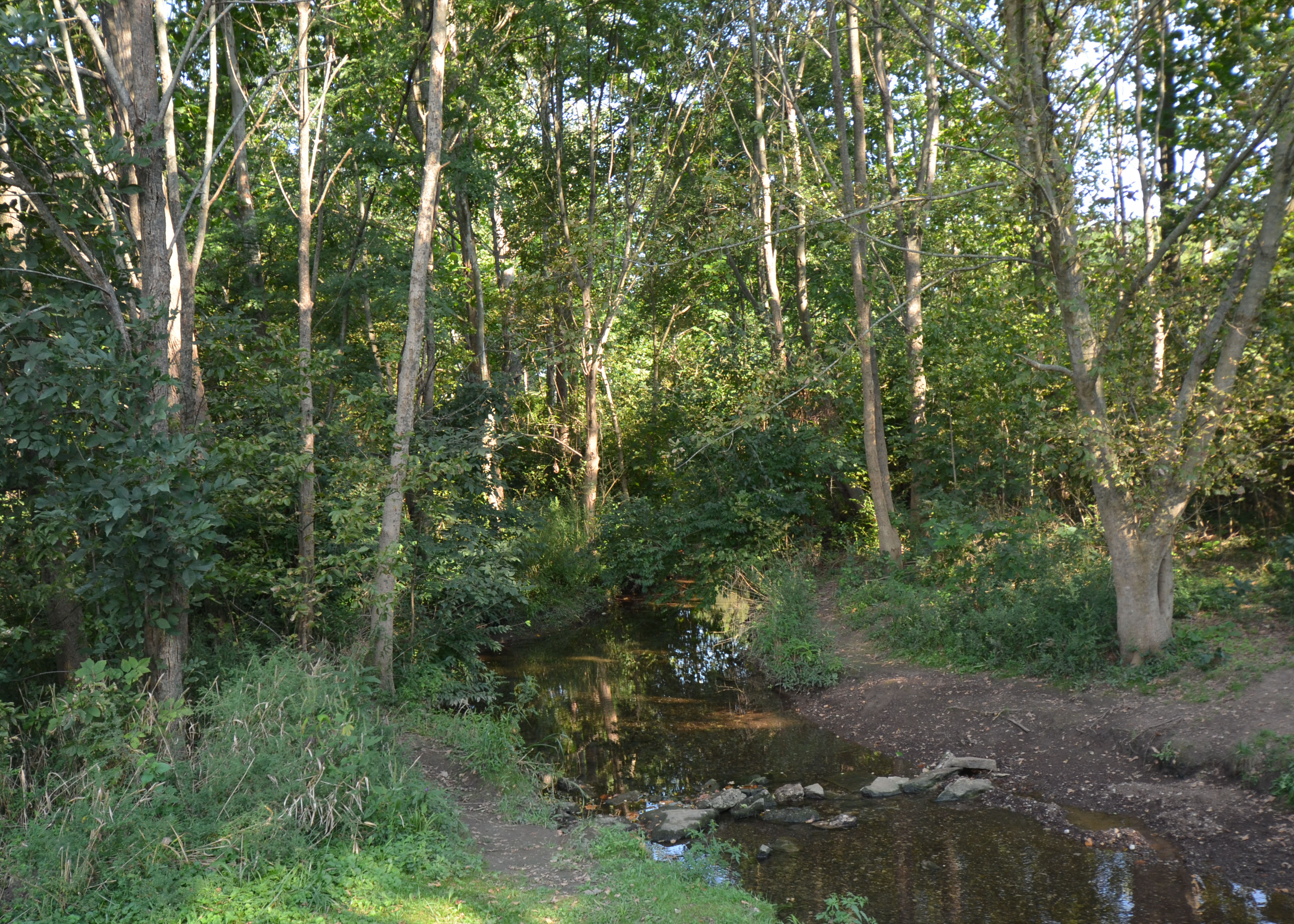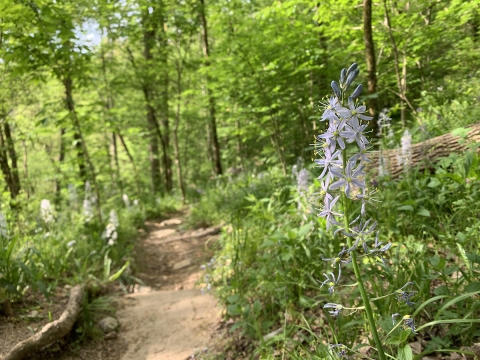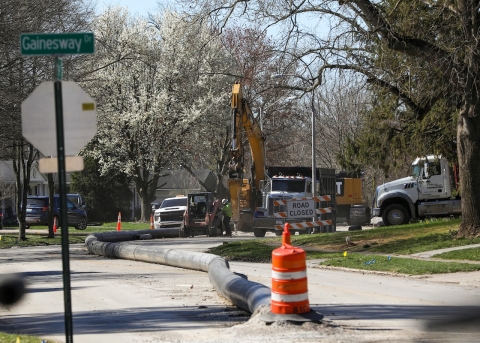
As the natural “end” to succession in Kentucky, in a lot of ways forests are the easiest habitat to create. If you leave everything alone and wait long enough, you'll get a forest! Of course, reality is never that easy. A lot of things can influence how fast trees grow, what kinds of trees make an appearance, and even if trees show up at all. So while it might seem simple, we do have to give succession a bit of help sometimes.
Unfortunately, a lot of the time what arrives on the scene as soon as we stop mowing a site is an invasive plant species. Here in the Bluegrass, our main culprits are wintercreeper and bush honeysuckle. Both these species were brought to the United States as ornamental plants and escaped into the wild, where they’ve done incredibly well—so well that they often outgrow native plants. Mowing keeps honeysuckle and wintercreeper from taking hold in an area. Of course once the mowing stops, you’ve got a fast-growing problem. As an example, bush honeysuckle will establish itself immediately on a site, leaving slow-growing trees without the sunlight and nutrients to grow. So what this means that if we want to create a forest in a Lexington park, we can’t just stop mowing and wait forty years. We also have to manage the site to make sure it doesn’t become a permanent honeysuckle thicket. How the site is managed depends on all kinds of factors, from size to budget to type of invasive plant. Invasive species management is a complicated subject that deserves its own blog post—and a place where volunteers are crucial to our efforts!
So what does it look like when we work together with succession to create a healthy forest? At first glance, it looks like trees. On second glance, things are more complicated (of course). Even after removing invasive plants like honeysuckle, it may take a long time for tree seeds to make their way naturally to the site, and even longer for them to sprout and grow. There isn’t really a quick way to turn a site from lawn into forest--but there are ways to take the process from super slow to pretty slow. Planting nursery trees, rather than waiting for trees to establish themselves, gives the forest stand a huge jumpstart, and holds the ground against persistent invasive species.
It also gives park managers a chance to choose which trees will be most suited to the area. Since most of our parks are in near houses, schools, or businesses, not all trees are suitable for Bring Back the Bluegrass sites. Some trees may be messy, have disruptive roots, or be unlikely to thrive in an urban environment. For example, a honey locust (a species covered in four inch thorns) may not be a great choice for the woodland next to a playground. A sugar maple, with its colorful fall foliage and climbing-friendly branches, might be a better fit. What tree species make up the new forest will depend a lot on where it's located. A little bit of planning, a little bit of management, and a whole lot of patience goes a long way in shaping a BBBG forest into its best self!


